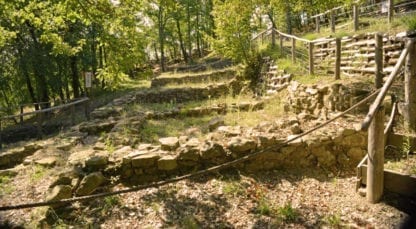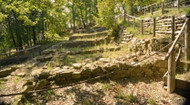Celtic Italy
Posted by Charles MacGregor on Jul 22nd 2018
Celtic Italy
Written for The Celtic Croft by Charles MacGregor of MacGregor Historic Games.
While we normally think of the Celts in the British Isles, or northern Europe, an archaeological site known as Monte Bibele in the province of Bologna, Italy revealed a picture of rural life in Celtic-ruled Italy. Unlike their northern relatives the "Italo-Celtic" people seem to have assimilated into a more "urban" life-style rather than the rural
environments that they came prior to the Gallic invasion of north Italy.

The Monte Bibele site consisted of a village terraced into the hillside and made up of 40, or 50 buildings laid out in small groups, suggesting the settlement may have been planned, as opposed to simply growing with its population. Housing 200 to 300 people, the village was first settled between 400 and 200 B.C. Excavations of a cemetery show the early population (between 350 and 330 B.C.) was primarily Etruscan, with a gradual increase in Celtic influences over the course of time.
The houses were built of stone and timbers, some even appear to have had second floors, and were most likely roofed with thatch. Inside were earth floors with clay hearths. Water was supplied to the village by a well-constructed cistern which was fed by a nearby stream.
The village was destroyed by a fire about 200 B.C. which actually aided in preserving some of the wood and foodstuffs through carbonization. Excavations of a storehouse suggest a fairly varied diet when they discovered several hundred pounds of wheat, oats, broad beans, lentils, peas, flax, acorns, olives, nuts, apples and grape seed. Other finds included pottery for storing or preparing food, loom weights and animal bones.
Although these Italo-Celts seem to have adopted many of the Roman/Italian ways of life, one of the things helped identify them were the weapons found in some of the male graves including the La Tene-style Celtic swords they continued to favor. In Googling around for more information about Monte Bibele I stumbled on to an artisan who was commissioned to make a replica of one of the swords, and a lance/javelin found at Monte Bibele. Here is a Google translation of the Italian webpage describing the making of the replica sword, and for the javelin/lance.

